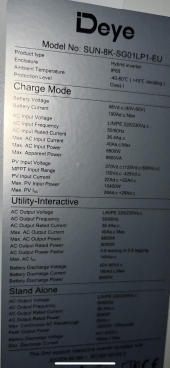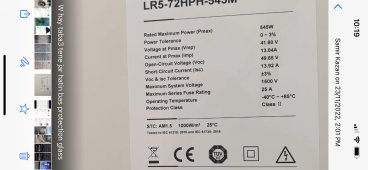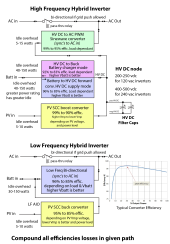Dear forum,
I do have 8kw inverter deye with :
voc of 370Vdc(125Vdc 500Vdc) and
mppt 150vdc 425 Vdc and
Max isc 28Adc + 28Adc and
Max input power 10400 W
The question is as long it is 8kw mean 8000w why it mentioned 10.4kw max can i reach that or exceed it?
Second which should i choose 425 VDc or the 500 which normaly 480 vdc maximum for safety …. For extra info im using 12 panels of longy 6series x 6 series but joining them on one mppt
Each panel has
Voc 49.65 let s say 50
Isc 13.92 A
Max series fuse rating 25A
Voltage at max 41 v and
So should i go 8x8 or 9x9 -> 396 v or 446v mean follow the 425vdc or 500 vdc any help thank you all
I do have 8kw inverter deye with :
voc of 370Vdc(125Vdc 500Vdc) and
mppt 150vdc 425 Vdc and
Max isc 28Adc + 28Adc and
Max input power 10400 W
The question is as long it is 8kw mean 8000w why it mentioned 10.4kw max can i reach that or exceed it?
Second which should i choose 425 VDc or the 500 which normaly 480 vdc maximum for safety …. For extra info im using 12 panels of longy 6series x 6 series but joining them on one mppt
Each panel has
Voc 49.65 let s say 50
Isc 13.92 A
Max series fuse rating 25A
Voltage at max 41 v and
So should i go 8x8 or 9x9 -> 396 v or 446v mean follow the 425vdc or 500 vdc any help thank you all






